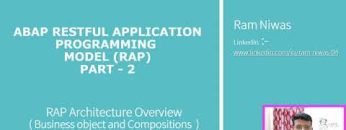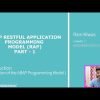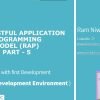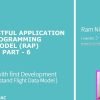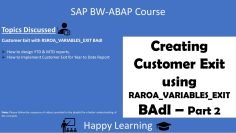This tutorial continues the exploration of the ABAP RESTful Application Programming (RAP) model, shedding light on the intricacies of business objects and their relationships. The presenter elaborates on the significance of associations and compositions in defining these relationships, providing clarity on when to use each.
Key topics covered in the session:
- Introduction to Business Objects: Business objects represent real-world entities in SAP, such as sales orders, invoices, or deliveries. They are characterized by a structure, behavior, and a corresponding runtime implementation.
- RAP Architecture Overview: The presenter provides a visual representation of the RAP architecture, emphasizing the three main components: data modeling and behavior, business service provisioning, and service consumption.
- Data Modeling with Compositions: The structure of a business object is depicted as a composition tree, showcasing the hierarchical relationship between root, parent, and child nodes. The presenter explains that compositions represent strong relationships where child entities cannot exist without their parent.
- Association vs. Composition: The tutorial delves into the differences between associations and compositions. While associations represent loose relationships (e.g., a product can exist without a sales order), compositions denote strong relationships (e.g., a sales order line item cannot exist without a sales order).
- Defining Root and Leaf Entities: In the composition tree, the root entity represents the primary business object, while leaf entities are the final nodes without any children.
- Practical Demonstration: The presenter provides a hands-on demonstration of defining relationships using the RAP model in SAP, showcasing the syntax and methodology for establishing associations and compositions.



